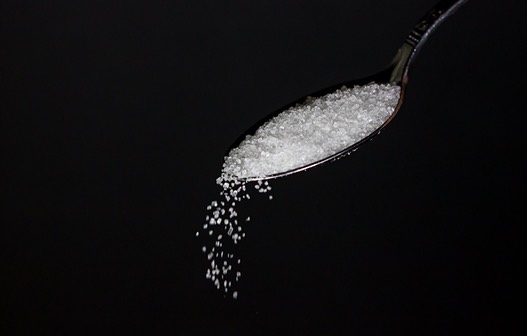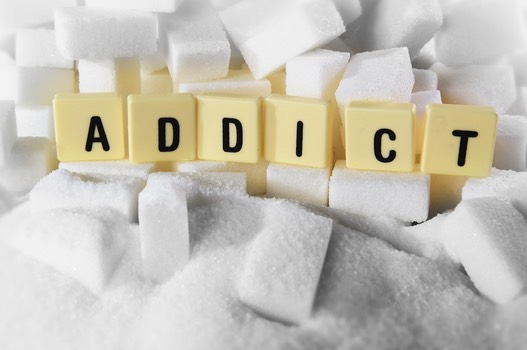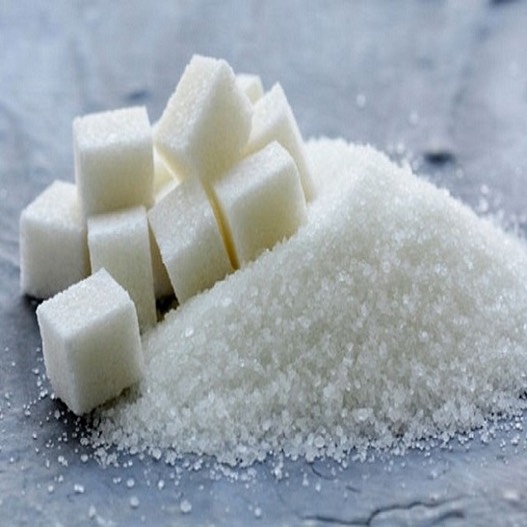
SUGAR: The “White Plague”
Sugar is caustic, plain and simple, especially the white, refined versions, which demolish health with staggering ease. Most foods consumed today, processed and homemade alike, contain added sugar. While the more natural sweeteners such as raw honey, maple syrup, and dehydrated cane sugar juice are gentler on our body chemistry, they still contain a high concentration of these simple carbohydrates. When over-consumed, sugar provokes a whirlwind of regulatory functions in the body that race to re-balance the system after sugar’s body-blow, especially for pint-sized kiddos. Replacing unhealthful sweeteners with more wholesome choices is a good first step to a more nourished body. The second and often more challenging step is reducing cravings and breaking the habit of daily sugary desserts. Although it may take a bit of work, I assure you, it can be done!
IS SUGAR REALLY THAT BAD?
A comment we often hear is, “A little won’t hurt!” Sure, a little sugar is a minor challenge for healthy individuals. Unfortunately, dysfunctional blood sugar balance, immune issues, and adrenal fatigue are common, and even a small amount of sugar can send someone with these disturbances into sugar shock. Moreover, most of us already get a little here, a little there, and then a little more over here, and bam! That sugar really adds up. What do we mean by “a lot”? Our ancestors likely indulged in around one tablespoon (60 calories) of honey per day (when available), which is stunningly low compared to today’s average sugar intake of one cup (774 calories) per day! YOWZERS!
About twenty years ago, Nancy Appleton, PhD, began an eye-opening, research-supported list of the ways sugar can ruin your health. As research on the subject has continued, so has Appleton’s list, growing to one hundred forty-three points long. The latest version is included in her most recent book, Suicide by Sugar. It is also available on her health blog found at www.nancyappleton.com. Here is a small, yet powerful sampling of reasons to avoid sugar:
• Sugar feeds cancer cells and has been connected with the development of cancer of the breast, ovaries, prostate, rectum, pancreas, lung, gallbladder and stomach.
• Sugar can increase fasting levels of glucose and can cause reactive hypoglycemia.
• Sugar can cause many problems with the gastrointestinal tract, including an acidic digestive tract, indigestion, malabsorption in patients with functional bowel disease, increased risk of Crohn’s disease and ulcerative colitis.
• Sugar can interfere with your absorption of protein.
• Sugar can cause food allergies.
• Sugar steals calcium from the bones and is a major factor in developing Osteoporosis.
• Sugar contributes to obesity.
UNRULY BEHAVIOR
Clinical research has proven that destructive, aggressive and restless behavior is significantly correlated with the amount of sugar that is consumed. The main reason for this is the fact that refined carbohydrates, which include sugar and its cousin white flour, cause hypoglycemia,or low blood sugar. Because glucose (blood sugar) is the primary fuel for the brain, when blood levels are too low, the brain is affected first. The chain of events goes something like this: a soda drink or other sugary food is consumed and blood sugar rapidly goes up, the body releases insulin in response, and the sudden increase in insulin causes a drop in blood glucose. This yo-yo scenario stresses the body, causing a fight-or-flight response, which involves a rapid increase in adrenaline. Both the low blood sugar and surge of adrenaline exacerbate aggressive behavior and contribute to hyperactivity, anxiety and attention difficulties.
I frequently hear testimonials from other moms who see improvements in their children’s behavior after reducing sugar in their family’s diet. Envision the impact the reduction of sugar consumption could have on an entire school! One such success story is set in a Georgia elementary school, where the principal, Dr. Yvonne Sanders-Butler, recognized the need for dietary changes with her students suffering many modern illnesses— obesity, diabetes and hypertension. In 2005, Browns Mill School became the first sugar-free school in the country, and the results speak for themselves with a 30 percent decrease in nurse visits, a 28 percent drop in teacher referrals for bad behavior, and improved test scores. Dr. Sanders-Butler continues to see the difference in the children’s health through weight loss and fewer absences, as well as more frequent everyday positive interactions with happier children.
At Browns Mill, every parent and child is asked to sign an “Achieving Academic Excellence through Nutrition” commitment contract, outlining the parameters and expectations of the program. Sugary foods are prohibited (even for birthdays) and confiscated if brought to school. School lunch menus were revamped and exercise, breakfast, and good sleep are expected. It goes to show, bold action can lead to sweet rewards!
MINERAL IMBALANCES
Minerals work synergistically with one another and have a vast number of functions within the body, including maintaining pH balance, aiding in digestion, and transmitting nerve impulses. Suffice it to say that the consequences of mineral imbalance can lead to many problems, including anxiety, asthma, tooth decay, brittle bones, and poor sleep quality. Here is the kicker: if one mineral is out of balance, so go the others. This is particularly true of calcium, magnesium, and phosphorous.
Years ago the dentist Melvin E. Page uncovered the significance of calcium’s ratio to phosphorous in regards to bone absorption and tooth decay. Sugar was found to be the driving force behind calcium-phosphorous imbalance; the elimination of this refined food allowed the ratio to recover and glucose levels in the blood to normalize. It was then that factors leading to bone loss and tooth decay (along with a number of other symptoms) vanished.
Sugar causes the body to excrete calcium and magnesium, which results in an improper calcium-phosphorous ratio. To help restore this balance, stored calcium is pulled from storage sources throughout the body—namely teeth and bones. Unfortunately, much of this previously stored calcium isn’t utilized well because it is not perfectly paired with phosphorus or magnesium. The calcium is either removed in the urine or finds a new, unnatural home, as in kidney stones or gallstones.
In his seminal work Sugar Blues, William Dufty explains the body’s strain with sugar intake this way: “So essential is balance to our bodies that we have many ways to provide against the sudden shock of a heavy intake of sugar. Minerals, such as sodium (from salt), potassium and magnesium (from vegetables) and calcium (from the bones) are mobilized and used in chemical transmutation; neutral acids are produced, which attempt to return the acid-alkaline balance factor of the blood to a more normal state. Sugar taken every day produces a continuously over-acid condition, and more and more minerals are required from deep in the body in the attempt to rectify the imbalance. Finally, in order to protect the blood, so much calcium is taken from the bones and teeth that decay and general weakening begin.”
A simple way to get a general idea of your body’s acidity is to use pH test strips or litmus paper. Sugar and grain excess, stress, and other unhealthy habits lower the body’s pH levels. For optimal health, our body’s pH should be neutral to slightly alkaline; when it is too acidic the body buffers this acidity by releasing calcium and magnesium from bones and breaking down muscle to produce ammonia (strongly alkaline).
Saliva (upon rising) and urine (second voiding of the morning) are best for testing pH levels, although some believe urine to be more accurate. Compare the color of the urine or saliva-covered strip to the pH color chart accompanying the package. Collect numbers over several days for an average, which will give you an idea how well your body is dealing with your sugar and carbohydrate load as well as managing your mineral coffers. If your pH tests show high acidity (below 6.8), cut down on your sugars and grains (especially all processed products), increase your consumption of good fats and recheck in a couple of weeks.
MORE SICK DAYS
White blood cells, called neutrophils, are a primary player in the immune system, fending off infection from foreign bacteria and viruses, anything from colds and strep throat to ear and sinus infections. Research shows these “germ-destroyers” become much less effective at their job when sugar is consumed (table sugar, fructose and even orange juice), and this immune malfunction can last up to six hours after consumption. Mark Sisson, author ofThe Primal Blueprint, suggests the reason for this six-hour despondency is that the neutrophils are too busy dealing with the inflammatory mess created by the influx of sugar. Whatever the mechanics, removing excess sugar is a must if you want to reduce the number of illnesses your family suffers.
THE ADDICTIVE POWER OF SUGAR
Although socially acceptable, sugar addiction is real. As with any addictive substance, more and more sugar is consumed over time, withdrawal symptoms are experienced when it is removed (headaches, low energy, mood swings), and finally strong cravings often lead to relapse. Regardless of the fact that it has been referred to as the “white plague” and rivals cocaine in its addictive strength, sugar remains a socially sanctioned commodity to sell, eat, or use to celebrate and lavish on children.
Sugar’s addictive power is three-fold. First, we have a natural affinity to sugar. It tastes yummy and gives our body fuel. While stumbling upon a beehive or bush of ripe wild berries was quite useful to our foraging ancestors in their endeavors to obtain enough calories, our situation is quite different today. In our developed world of easy access, this added fuel has become over-available, over-processed and over-consumed, all of which lead to trouble with a capital T.
Second, sugar has the ability to increase pleasure-yielding opioids in the brain, similar to morphine and heroin, making one’s sugar cravings often too strong to ignore. Julia Ross tells us in The Diet Cure, “For some of us, certain foods, particularly ones that are sweet and starchy, can have a drug-like effect, altering our brains’ mood chemistry and fooling us into a false calm, or a temporary energy surge. We can eventually become dependent on these drug-like foods for continued mood lifts.”
Third, sugar begets more sugar. Eating sugar clearly throws one’s body chemistry into a tailspin. Tag on poor sleep habits, adrenal fatigue, and an overload of distress, intense cravings for sugar (or other substance like alcohol or drugs) can easily develop. Insulin imbalances and a lack of the happy-brain chemical called serotonin are often the underlying culprits. Essentially, the sugar being consumed perpetuates the vicious cycle of more intense sugar cravings.
Are the dangers of sugar giving you chills yet? We live in a fallen world; sickness, crime, mental illness, diabetes, cancer and other unfortunate situations are going to happen, but imagine if the body-wrecking effects of an overload of sugar were removed from the equation? How much less would we suffer? How much easier would it be for children to sit still, concentrate, and behave in class? How much happier would people feel? Would teen violence or drug use diminish? The positive possibilities are endless.
HOW MUCH IS TOO MUCH?
Becoming sugar-celibate isn’t necessary or appealing to most. We are designed to enjoy sweet foods and, well, they taste good! Nancy Appleton’s extensive research on sugar led her to uncover the fact that, for healthy individuals, the threshold of added sugar is two teaspoons at one time, no more than two to three times a day, totaling two tablespoons altogether. This means any sugar—white table sugar, dehydrated cane sugar juice, maple syrup, honey, dextrose, brown rice syrup, maple sugar or coconut sugar. For unhealthy individuals, no amount of sugar is recommended.
In terms of processed foods, two teaspoons isn’t much). Bottom-line, most processed foods are too sugar-heavy to be eaten if balanced body chemistry is your goal. Switching to artificial sweeteners is not the answer either, as these synthetic ingredients cause numerous deleterious side effects (see Sugar-Free Blues on www.westonaprice.org for more). Also, as a side note, white flours and other stripped starches (also frequently found in processed foods) function similarly to sugar due to their “skeletonized” state; they are also best avoided for all the same reasons previously mentioned.
Most families seeking vibrant health know that home-cooked meals are a necessity. The case made for cutting down sugar only strengthens the need for this fresh-from-the-kitchen lifestyle. As for added sugar in homemade goods, below are a few reasonable choices one might consume:
• Two teaspoons raw honey in a serving of full-fat, homemade yogurt with berries, ground nuts, and a dash of cinnamon and nutmeg
• Two teaspoons maple syrup blended in a fruit sauce to top soaked wholegrain pancakes or waffles
• One tablespoon honey-sweetened preserves on an almond butter sandwich
• One tablespoon date syrup or paste in an avocado pudding
• A small pour of brown rice syrup in a smoothie with egg yolks, berries and coconut oil
• A muffin recipe made with 4 tablespoons (1/4 cup) coconut sugar per dozen (equals 2 teaspoons per muffin)
Needless to say, it is imperative that each and every one of us becomes keenly aware of our added sugar consumption. But what about sugars naturally found in foods? Fruits, berries, milk, carrots, winter squash, sweet potatoes, cherry tomatoes and red peppers? Whole foods contain a cornucopia of vitamins, minerals, fiber, fat and other co-factors that mitigate the dangers of the residing sugars. Body chemistry is not as affected as with more concentrated and isolated sugar sources. Moreover, once a person’s body chemistry is stabilized, these more subtly sweet, whole foods will often be enough to satisfy sweet cravings.
With that said, while these wholesome foods are nourishing to consume, the more sugar-endowed choices can be overdone. If you like fruit, the less-sugary choices of berries, cherries, and apricots are best. One or two dates at a time are plenty, as each can have up to one teaspoon of sugar. Raw milk from range-fed animals is definitely nourishing for most to consume, however overindulging in its uncultured form can work against those who are trying to lose weight or maintain weight loss. (Culturing dairy uses up most, if not all, the sugars.)
A starch-filled sweet potato smothered with pastured butter and sour cream will cause only moderate fluctuations in blood sugar levels, because of the added fat and protein to slow down the meal’s digestion. Essentially, overdoing any food with a higher percentage of sugar or starch (from grains and potato foods) can be counterproductive to insulin stability and overall health. Use wise judgment and regularly re-evaluate your family’s attachment to even non-refined sweet foods.
Dr. Joseph Mercola goes as far as to say in his book Sweet Deception, “Without a doubt the best way to prevent aging and degenerative disease is to keep your insulin levels in a low but healthy range.” The simple answer to healthy insulin levels is moderate intake of grains, minimal consumption of sugars, physical activity, good sleep and a healthy mental outlook.
As for those dealing with health conditions or symptoms, eliminating concentrated sugar sources altogether is ideal, at least for the short term. Ironically, one’s insatiable desire for sugar could indeed be worsened by these very same health issues, resulting in a difficult-to-break cycle. If you are unsure where to start, partner with a holistic practitioner to assess your blood glucose levels. Find out your adrenal hormone rhythm (through a saliva test) and assess your thyroid health. A full blood panel can also give useful information on the body’s needs and deficiencies.
For tips on conquering sugar cravings, call Robust Life Center and make an appointment with Sam or Vicki. They will help you get your family off health-wrecking sweeteners and replace them with more nourishing, whole foods. And now, knowing what you know, even naturally derived sugars should be limited; unfortunately, cravings sabotage the best of intentions. But with the right tool you can zap sugar cravings at the source. There is no magic pill; getting off sugar requires a well-designed lifestyle with exercise, plenty of sleep and relaxation, and time in the kitchen. Only then will your days of sugar slavery come to an end so that you can reap the rewards of happier moods, less sickness, and an overall brighter future for everyone.

